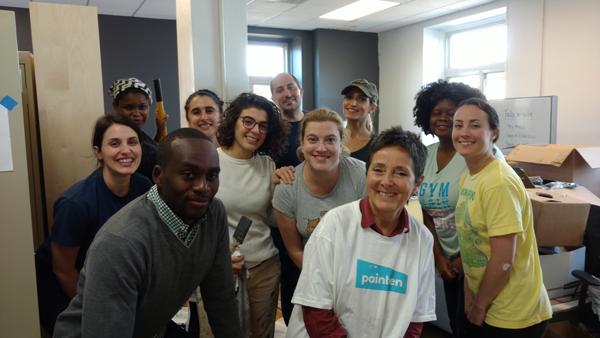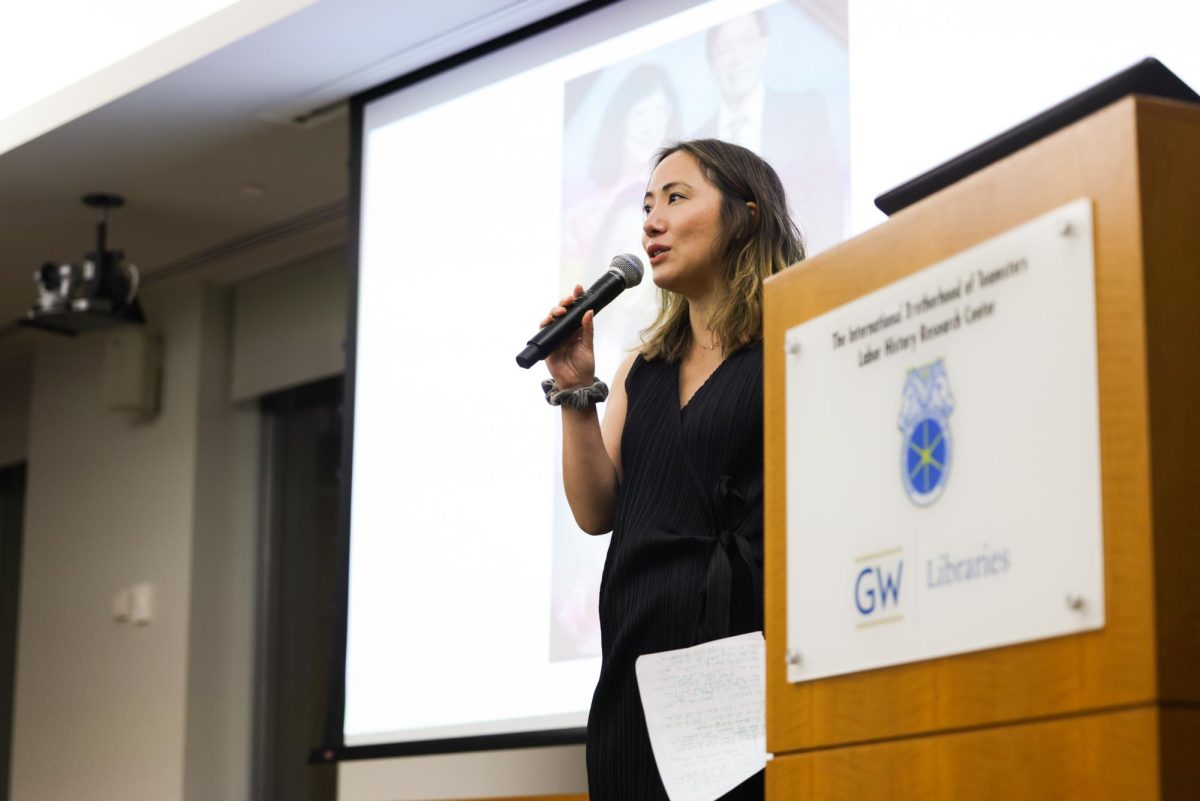Updated: Nov. 8, 2016 at 1:38 p.m.
When a group of students from an interior architecture and design graduate class came to the Homeless Children’s Playtime Project headquarters to redesign the space as part of a class project, staff thought they would just rearrange the administrative office’s furniture and add a coat of paint to the walls.
But they were wrong.
Not only did the students revamp the space and bring in professional painters from Paintzen, but they also added thousands of dollars worth of donated Allsteel furniture from professional vendors.
The students collected $40,000 worth of furniture donations to help with the hands-on learning project assigned by Nancy Evans, a professor of interior architecture and design, and Erica Riggio, an alumna and an adjunct professor of interior architecture and design.
Evans and Riggio created the class assignment at HCPP – named the “Playtime Project” by students – to teach them how a firm would design and build a space for a real-life client. HCPP, located in Columbia Heights, trains volunteers to work with children in emergency shelter and transitional housing sites in the District, doing weekly activities, handing out healthy snacks and offering them opportunities to play and learn.
“It was perfect for them to be able to have that real life experience,” Riggio said. “Because you can be a great designer and design amazing things, but if you never build anything, it’s to no avail, and it’s so different when you do.”
Evans said she came up with the idea for the project when her friend and the co-director of HCPP, Jamila Larson, called her over the summer asking for help with HCPP’s office design to accommodate the organization’s increase in staff over the past few years.
HCPP quickly learned to trust the design expertise of the students, Evans said. Originally, the organization shared one big room with another nonprofit organization and had two other smaller rooms down the hall. To fix this problem, the students convinced their floor mates to swap offices – a feat HCPP had tried and failed to conquer two years ago.
Rebecca Staple, the office manager at HCPP, said she coordinated with the class. At the start of the project, the students came to the HCPP office to take measurements and talk about design ideas. Then, Staple visited GW to see a presentation on how those ideas would come to life.
“We were completely blown away by their presentation,” Staple said. “It was very professional and was way more than we expected – way more than we could’ve hoped for.”
Eliza McNabb, a graduate student who worked on the project, said she gained valuable experience from the project that most interior design classes don’t offer because it was a real-life situation.
“In graduate school we make a lot of beautiful designs and draw perspective and imagine what it would look like in real life and executed,” she said. “But this was an opportunity to see what we designed really happen. This is what it actually looks like in real life.”
The students divided up elements of the project like an architectural firm would, McNabb said. Her role focused on choosing colors and applying paint.
Designing a space for children allowed the group to be more creative, she added. The office has upgraded from a cramped and cluttered space with a drab color scheme to an open space with sleek furniture and colorful walls.
“They wanted a space that was professional but felt fun and playful because their work is centered around kids,” McNabb said. “We wanted a space with some vibrant energy that was not boring.”
McNabb said learning how to communicate with the client was a “big part of the learning process.”
“We’re speaking two different languages almost,” McNabb said. “We’ve been educated to speak as designers. When a client is giving you a lot of information, figuring out how to translate that into design is definitely a challenge and an exciting one – like solving a puzzle.”
Now, the students will write the mission statement on the walls, find one more desk, add carpet and hang artwork as the finishing touches. They said they hope to complete the project by the end of the semester.
Deborah Sherman, the volunteer coordinator at HCPP, said the students came in on the weekends to help the organization’s staff who didn’t have time for a project of this scale.
“It was really incredible how much the students from GW made this whole plan,” Sherman said. “They just went above and beyond what I would expect from a class project. It was just really great to partner with them.”






